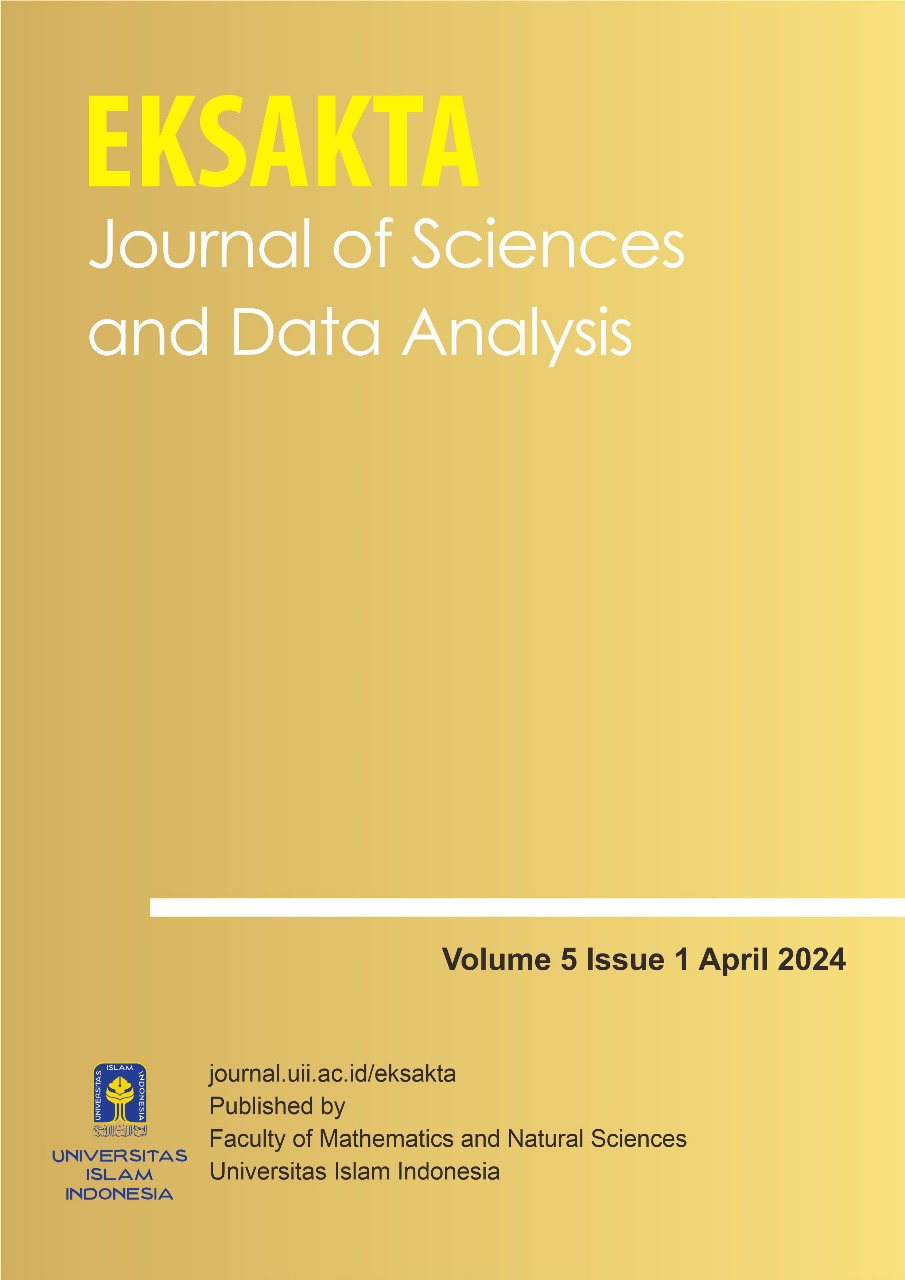Main Article Content
Abstract
Shallots and red chilies are superior vegetable crops and contribute quite a lot to the development of the national economy. Prices of these two commodities fluctuate almost every year. At certain times the price of both commodities soared due to high demand while supply in the market was insufficient. So, it is necessary to do an analysis to see what phenomena have a significant influence on the increase in the price of shallots and red chilies. The method used in this study is ARIMAX with exogenous variables, namely variables dummy monthly and various religious holiday calendars such as Chinese New Year, Eid al-Fitr, and Eid al-Adha. The results of the analysis show that the price of shallots is influenced by calendar variations one month after Chinese New Year and one month before Idul Fitri. Meanwhile, the price of red chilies is influenced by the month before Chinese New Year, during Chinese New Year, and a month after Chinese New Year, a month before Eid al-Fitr and during Eid al-Fitr, a month before Eid al-Adha and during Eid al-Adha. Shallots and red chilies ARIMAX models obtained a MAPE value of 17.36% and 25.62%.
Keywords
Article Details
References
- Badan Pusat Statistik, Keadaan Ketenagakerjaan Indonesia Februari, (2022) 34.
- O. A. D. Setyowati, Peramalan Harga Cabai Rawit di Provinsi Jawa Timur Menggunakan Metode Arimax, UIN sunan ampel surabaya, 2020.
- T. Wahyudie, Pengelolaan Komoditas Hortikultura Unggulan Berbasis Lingkungan, Lombok Tenga, Nusa Tenggara Barat: Forum Pemuda Aswaja, 2020.
- M. A. Rofiq, Cabai Menggunakan Metode Forecasting Of Chili Agricultural Strategic Commodities Using Backpropagation Neural Network Method Cabai Menggunakan Metode, Institut Teknologi Sepuluh Nopember, 2017.
- Bank Indonesia, Tim Pengendalian Inflasi Pusat ( TPIP ), (2022) pp. 1–16.
- B. L. Bowerman and R. T. O'Connell, Time Series and forecasting: An applied approach. (Third Edition). Boston: Duxbury Press, 1993.
- W. W. S. Wei, Time Series Analysis: Univariate and Multivariate Methode (Second Edition). Pearson Prentice Hall, 2006
References
Badan Pusat Statistik, Keadaan Ketenagakerjaan Indonesia Februari, (2022) 34.
O. A. D. Setyowati, Peramalan Harga Cabai Rawit di Provinsi Jawa Timur Menggunakan Metode Arimax, UIN sunan ampel surabaya, 2020.
T. Wahyudie, Pengelolaan Komoditas Hortikultura Unggulan Berbasis Lingkungan, Lombok Tenga, Nusa Tenggara Barat: Forum Pemuda Aswaja, 2020.
M. A. Rofiq, Cabai Menggunakan Metode Forecasting Of Chili Agricultural Strategic Commodities Using Backpropagation Neural Network Method Cabai Menggunakan Metode, Institut Teknologi Sepuluh Nopember, 2017.
Bank Indonesia, Tim Pengendalian Inflasi Pusat ( TPIP ), (2022) pp. 1–16.
B. L. Bowerman and R. T. O'Connell, Time Series and forecasting: An applied approach. (Third Edition). Boston: Duxbury Press, 1993.
W. W. S. Wei, Time Series Analysis: Univariate and Multivariate Methode (Second Edition). Pearson Prentice Hall, 2006




